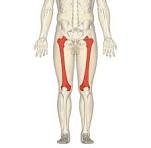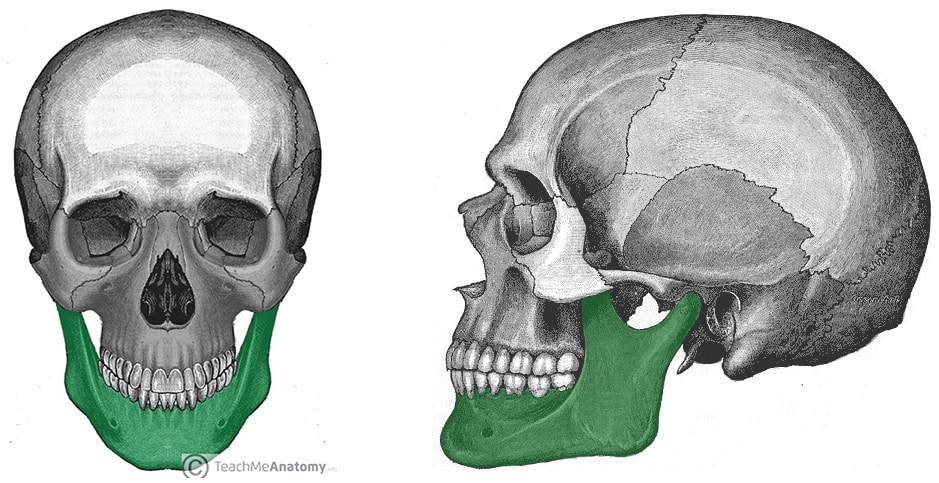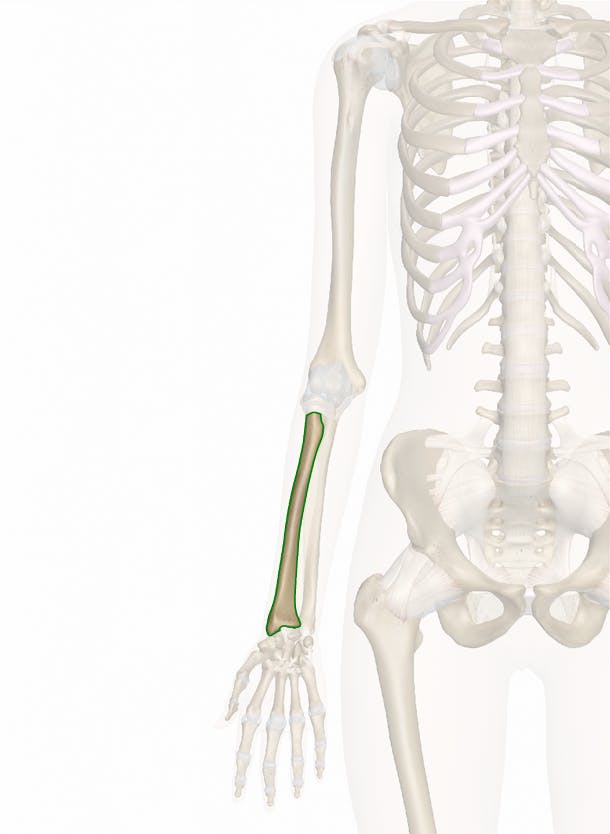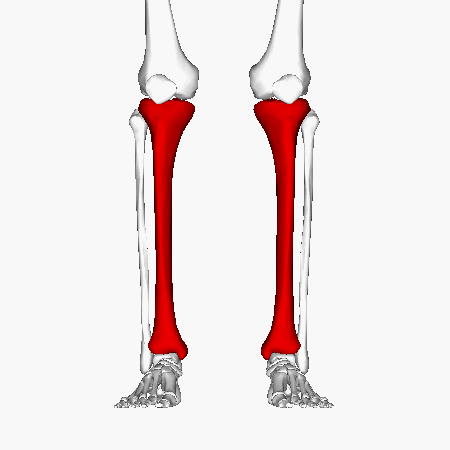scientific name for fingers and toes
phalanges
Inside the center of the bone is a hollowed-out cavity filled with thick fluid.
Red blood cells produced here.
bone marrow
bones that protect your heart and lungs
ribs
scientific name for the jaw
mandible
breastbone -- middle of your chest
sternum
Name the highlighted bone: 
Femur
Bones of the arms and legs, such as the Humerus, Femur, and Tibia, are part of which skeleton?
What is Appendicular?
This part of the axial skeleton stacks small bones to allow strength and bending
spine
How many bones are you born with
270-300
Also called the shoulder blade, this flat bone slides over the back ribs and connects to the humerus.
scapula
What is the name of the bone highlighted?

Mandible
Red bone marrow produces what
blood cells
longest arm bone, which is at the top of the arm.
humerus
These two bones work together to create a shoulder girdle with a wide range of motion.
clavicle and scapula
Name the highlighted image>

radius
What is the smaller lower leg bone called?
What is a fibula?
What bone is on the thumb side of the arm?
Radius
These bones work together so you can twist, turn, and move your arm with precision.
humerus, radius, and ulna
If a person breaks a bone that no longer allows them to twist their wrist or turn a doorknob, which specific bone is most likely injured, and why?
What is the radius, because it crosses over the ulna to allow wrist rotation.
Name both of the bones in this section. Which one is which?

Tibia and fibula
This section of the skeleton sits along the body’s middle line and protects vital organs like the brain, heart, and lungs.
What is the axial skeleton?
This strong long bone runs from the shoulder to the elbow
Humerus
This joint links the pelvic girdle to the upper leg and allows movement in many directions for walking and dancing.
hip joint
An athlete has trouble lifting their arm above their head after a shoulder injury. Which two bones are likely affected, and how do they normally work together?
What are the clavicle and scapula, because together they form the shoulder girdle that allows a wide range of arm motion.